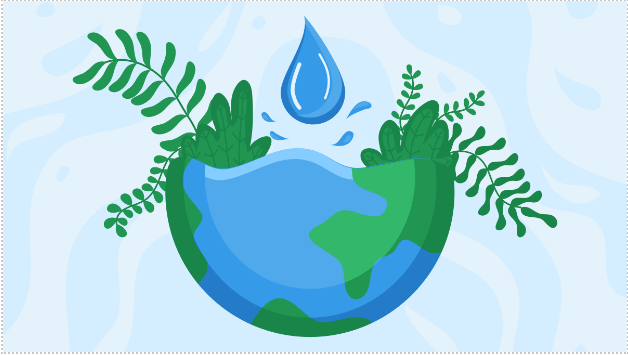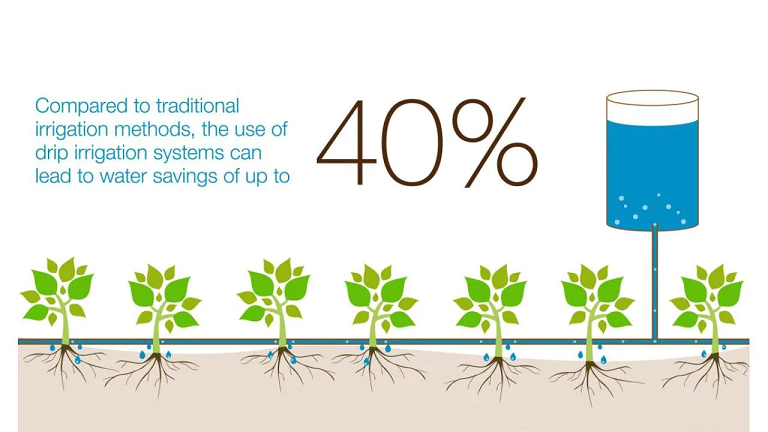Water conservation in sustainable agriculture : 8 Methods to Promote Sustainable Agriculture
Quick summary: Discover the key to sustainable agriculture with effective water conservation practices. Learn how water management strategies and innovative solutions contribute to resource preservation, increased efficiency, and environmental sustainability. Explore the benefits of water conservation for sustainable agriculture in our informative blog.

Sustainable agriculture practices that prioritize water conservation are essential to ensure food security, protect ecosystems, and build a resilient future. In this blog post, we will explore the importance of water conservation in agriculture.
Water is a precious resource that is crucial for sustaining life on our planet. With the increasing demands of a growing global population and the impacts of climate change, water scarcity has become a pressing issue, especially in the agricultural sector.
Water conservation in sustainable agriculture is a fundamental component for promoting efficient resource usage, environmental stewardship, and long-term food security. By embracing water conservation strategies, farmers can reduce their water footprint, minimize environmental impacts, and contribute to a more sustainable future.
Unraveling the Water Cycle’s Impact on Agriculture
The water cycle, also known as the hydrological cycle, is a continuous process that circulates water between the Earth’s surface, atmosphere, and underground reservoirs. It plays a vital role in agriculture as it governs the availability of water for crops, soil moisture levels, and overall agricultural productivity.

- Evaporation: The water cycle begins with the process of evaporation, where heat from the sun causes water to vaporize from oceans, lakes, rivers, and other water bodies. This water vapor rises into the atmosphere.
In agriculture: Evaporation from soil surfaces and plant leaves (transpiration) contributes to the overall loss of water from agricultural fields. High temperatures and wind can increase evaporation rates, leading to increased water demand for crops.
- Condensation: As the water vapor rises and cools in the atmosphere, it undergoes condensation, forming water droplets that gather to form clouds.
In agriculture: Condensation plays a role in precipitation, which is crucial for providing water to crops.
- Precipitation: When the water droplets in the clouds combine and become too heavy, they fall to the Earth’s surface as precipitation. This can include rain, snow, sleet, or hail.
In agriculture: Precipitation is a primary source of water for agriculture. Adequate and evenly distributed rainfall is crucial for crop growth and can reduce the reliance on irrigation. Insufficient precipitation or irregular rainfall patterns can lead to droughts, crop failure, and water stress for farmers.
- Infiltration and Percolation: After precipitation reaches the Earth’s surface, it undergoes infiltration, where it seeps into the soil. Some of the infiltrated water travels deeper into the ground through a process called percolation, eventually reaching groundwater reservoirs.
In agriculture: Infiltration and percolation contribute to soil moisture, which is critical for crop root uptake and overall plant health. The ability of soil to absorb and retain water affects irrigation needs, water availability, and nutrient cycling in agriculture.
- Surface Runoff: In some cases, when the precipitation exceeds the soil’s ability to absorb water, it results in surface runoff. This occurs when water flows over the land surface and collects in streams, rivers, and eventually, lakes or oceans.
In agriculture: Surface runoff can lead to soil erosion, carrying away valuable topsoil and nutrients. It can also cause water pollution by carrying agricultural chemicals and sediments into water bodies, adversely impacting ecosystems and water quality.
- Transpiration: Plants absorb water through their roots and transport it to their leaves, where it is released into the atmosphere through small openings called stomata. This process is known as transpiration.
In agriculture: Transpiration is essential for plant growth and nutrient uptake. It helps regulate plant temperature and maintains cell turgor, influencing crop productivity. Proper irrigation management ensures an adequate water supply to meet the transpiration needs of crops.
The water cycle, also known as the hydrological cycle, is a continuous process that circulates water between the Earth’s surface, atmosphere, and underground reservoirs. It plays a vital role in agriculture as it governs the availability of water for crops, soil moisture levels, and overall agricultural productivity.
Unveiling the Water Footprint: Exploring the Water Intensity of Crops
The water footprint of crops refers to the total volume of water consumed or used throughout their entire production process, including irrigation, rainwater, and water used in processing or manufacturing. It provides insights into the amount of water required to produce a specific crop, helping us understand the water intensity of different agricultural products.

Understanding the water footprint of different crops is essential for sustainable water management in agriculture. The water footprint provides insights into the amount of water consumed throughout the entire production process, including irrigation and processing. By examining the water intensity of various crops, we can make informed decisions to promote water conservation and more efficient agricultural practices.
Sustainable Irrigation Practices: Preserving Water for a Greener Future
Sustainable irrigation aims to maximize water-use efficiency, minimize water loss, and protect water quality. Let’s explore various sustainable irrigation practices that contribute to water conservation, preserve ecosystems, and ensure long-term agricultural productivity.
Drip Irrigation:
Drip irrigation is a highly efficient irrigation method that delivers water directly to the plant root zone. By minimizing water loss through evaporation and runoff, it maximizes water-use efficiency. Drip irrigation systems use a network of tubes and emitters to deliver water slowly and precisely, reducing water wastage and optimizing plant uptake.

AWD Irrigation practices
Alternate Wet and Drying (AWD) is a management practice in irrigated lowland rice that saves water and also reduces greenhouse gas emissions while maintaining yields. It involves periodic drying and reflooding of rice fields.
Precision Sprinklers:
Modern sprinkler systems equipped with precision nozzles and pressure regulators can distribute water evenly across the field, minimizing overspray and reducing water loss due to wind drift. By matching irrigation rates to crop water requirements, precision sprinklers help conserve water while maintaining optimal soil moisture levels.
Soil Moisture Sensors:
Using soil moisture sensors, farmers can accurately monitor soil moisture content and adjust irrigation schedules accordingly. These sensors provide real-time data on soil moisture levels, helping farmers determine when and how much water to apply. This approach prevents overwatering, reduces water waste, and prevents waterlogged soils.
Irrigation Scheduling:
Developing effective irrigation schedules based on crop water needs and local climate conditions is crucial for sustainable water management. By considering factors such as evapotranspiration rates, rainfall patterns, and soil characteristics, farmers can optimize irrigation timing and frequency, ensuring water is used efficiently without compromising plant health.
Mulching:
Applying organic or synthetic mulch to the soil surface conserves moisture by reducing evaporation and suppressing weed growth. Mulch acts as a protective layer that shields the soil from direct sunlight and wind, keeping it cooler and preventing water loss. It also improves soil structure, promotes nutrient retention, and reduces erosion.
Rainwater Harvesting:
Rainwater harvesting systems capture and store rainfall for later use in irrigation. By collecting rainwater from rooftops, land surfaces, or storage ponds, farmers can supplement their irrigation needs while reducing dependence on freshwater sources. Rainwater harvesting also helps recharge groundwater and reduces pressure on local water supplies.
Crop Selection and Rotation:
Choosing crops that are better adapted to local climatic conditions and soil types can optimize water use. Certain crops require less water compared to others, and selecting drought-tolerant varieties conserves water resources. Crop rotation, on the other hand, breaks pest and disease cycles, enhances soil fertility, and reduces irrigation demands.
Sustainable irrigation practices are essential for responsible water management in agriculture. By implementing techniques such as drip irrigation, precision sprinklers, soil moisture monitoring, and rainwater harvesting, farmers can reduce water waste, improve water-use efficiency, and preserve valuable water resources. Embracing these practices not only benefits agricultural productivity but also promotes environmental conservation and ensures a greener future for generations to come.
TraceX has been helping companies to measure, monitor and track sustainable practices related to water management. Real-time monitoring and tracking the irrigation schedules helps to promote sustainable practices resulting in water conservation.
Conclusions
Water conservation in agriculture is closely tied to social and economic well-being. By ensuring the availability of water for irrigation, farmers can secure their livelihoods, support rural communities, and contribute to food security. Moreover, sustainable water management practices create opportunities for innovation, technology adoption, and agricultural resilience in the face of a changing climate.
In conclusion, water conservation in agriculture is essential for environmental sustainability, food security, and economic prosperity. By implementing efficient irrigation techniques, soil management practices, and embracing technological advancements, farmers can optimize water use, protect ecosystems, and ensure a sustainable future for agriculture.

